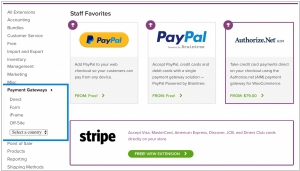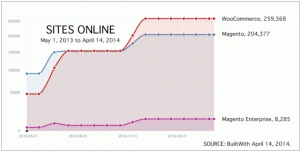WooCommerce vs Zoho Commerce
June 13, 2023 | Author: Sandeep Sharma
WooCommerce and Zoho Commerce are e-commerce platforms, but they have distinct differences in their features, integration, and target audience. WooCommerce is a popular plugin for WordPress websites, allowing users to turn their WordPress site into an online store. It offers a wide range of customization options, flexibility, and a large ecosystem of extensions and themes. WooCommerce is well-suited for businesses and individuals who already have a WordPress website and want to add e-commerce functionality to it.
Zoho Commerce, on the other hand, is a standalone e-commerce platform offered by Zoho Corporation. It provides end-to-end e-commerce solutions, including website creation, product management, inventory management, order processing, and payment integration. Zoho Commerce offers comprehensive features, a user-friendly interface, and seamless integration with other Zoho applications, such as Zoho CRM and Zoho Books. It is suitable for small to medium-sized businesses looking for a complete e-commerce solution with integrated business management tools.
See also: Top 10 Online Store Builders
Zoho Commerce, on the other hand, is a standalone e-commerce platform offered by Zoho Corporation. It provides end-to-end e-commerce solutions, including website creation, product management, inventory management, order processing, and payment integration. Zoho Commerce offers comprehensive features, a user-friendly interface, and seamless integration with other Zoho applications, such as Zoho CRM and Zoho Books. It is suitable for small to medium-sized businesses looking for a complete e-commerce solution with integrated business management tools.
See also: Top 10 Online Store Builders
WooCommerce vs Zoho Commerce in our news:
2020. WooCommerce launches native WooCommerce Payments feature

The e-commerce platform WooCommerce, created by Automattic, is enhancing its payment functionality with a native solution known as WooCommerce Payments. This payment feature is powered by Stripe and offers seamless integration with the rest of the WooCommerce platform. In the past, WooCommerce users had the option to enable extensions to incorporate payment widgets on their websites, including providers like Stripe, Amazon Pay, Square, or PayPal. However, WooCommerce Payments takes this capability a step further by simplifying the setup process and facilitating order acceptance, providing an effortless experience for merchants.
2014. WooCommerce outgoes Magento in Ecommerce Platform Pack

According to BuiltWith, a web technology profiling tool, WooCommerce, the widely-used WordPress ecommerce plugin, boasts nearly 260,000 active sites indexed, surpassing its closest competitor, Magento, by approximately 37,000 sites. The remarkable number of websites powered by WooCommerce can be attributed, at least in part, to the immense popularity of the WordPress content management software, which serves as the foundation for WooCommerce. With WordPress being estimated to support over 12.3 million websites globally, it has solidified its position as one of the most widely utilized web publishing platforms available. Furthermore, WordPress enjoys extensive documentation and widespread understanding within the development community, making the integration of ecommerce capabilities through WooCommerce a relatively straightforward and manageable endeavor.




